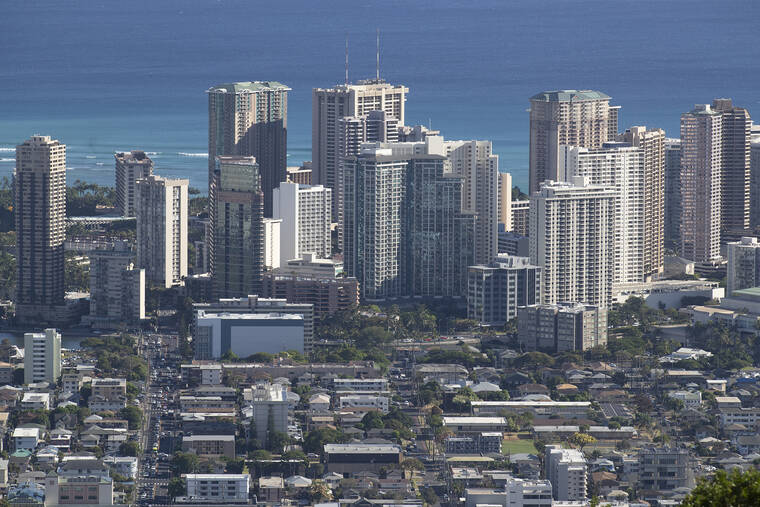HONOLULU — Hawai‘i taxpayers could be seeing phased state income tax cuts that over eight years amount to the biggest reduction in state history.
A conference committee of state House and Senate negotiators agreed Friday on a new draft for a bill aimed at providing Hawai‘i income tax breaks.
The measure, House Bill 2404, would double the standard deduction for the 2024 tax year, and then keep raising it every two years through 2030.
In addition, the bill would adjust tax brackets, which designate how much tax is owed for different levels of income, every two years from 2025 to 2031 so that households with lower incomes don’t pay more or a lot more in taxes as wages rise.
Rep. Kyle Yamashita, chair of the conference committee for the House on HB 2404, said the bill, if enacted, would allow minimum wage earners to keep more of their income and in the long run become the biggest tax cut in Hawai‘i history.
“This is, I think, something very big,” he said during the conference meeting. “Ultimately, by the time we hit 2031, it’ll be the biggest tax cut to the working people of the state of Hawai‘i in state history.”
Details of the bracket shift and how households with middle and higher incomes would fare under the bill were not immediately available.
Yamashita (D, Pukalani- Makawao-Ulupalakua) said during the meeting that a focus was on lower-income taxpayers.
“What we’re concerned about is that as minimum wage goes up, if we don’t adjust the brackets, the people that are earning minimum wage will be pretty much paying middle income taxes,” he said during the meeting. “So we have to keep adjusting these brackets so that we’re keeping money in the pockets of the people that need to keep the money.”
The Legislature in early 2022 passed a bill for raising Hawai‘i’s hourly minimum wage, which at the time was $10.10, to $12 on Oct. 1, 2022, followed by three more increases over the next several years.
On Jan. 1, the minimum wage rose to $14, and it will rise to $16 in 2026 and then to $18 in 2028.
Gov. Josh Green during his first State of the State address in 2023 proposed an “audacious” plan to provide Hawai‘i taxpayers with much relief. His proposal included boosting all Hawai‘i income tax bracket thresholds and increasing the standard deduction along with the personal exemption.
The governor’s plan also aimed to increase a tax credit for low-income renters, the earned income tax credit, the food excise tax credit and a child and dependent care credit. Yet another provision in the plan was a new maximum $500 credit for many public and private school teachers who spend their own money on school supplies.
Green said his self-described Green Affordability Plan would save a family of four in every income tax bracket nearly $2,000 and that lower-income families would see greater savings.
The amount of reduced state revenue from Green’s proposal was estimated at $313 million in an initial year, plus around $20 million in each subsequent year, to reach $417 million in fiscal year 2029.
Green’s tax package legislation didn’t pass, but lawmakers in 2023 did pass a separate measure that increased the earned income tax credit, the food excise tax credit and the child and dependent care credit, amounting to savings for lower-income households totaling $125 million.
Earlier this year Green pursued what he dubbed “phase two” of a tax reduction effort that would provide all taxpayers relief from inflation and further increase the child and dependent care tax credit.
“Families in our state struggle to make ends meet,” Green said in January. “Despite working multiple jobs, more are living paycheck to paycheck than even before the pandemic.”
HB 2404 as introduced reflected Green’s plan, though the bill was significantly amended first by the House Finance Committee, chaired by Yamashita, and then by the Senate Ways and Means Committee.
Green praised lawmakers for their work producing the compromise draft of the bill.
“I applaud the legislature for passing this bill because we are aligned on helping working families with some much needed tax relief,” he said in a statement. “Together with the tax cuts from last year, this second part of the Green Affordability Plan represents some of the largest income tax cuts in our state’s history targeted to those residents and families that need it the most.”
Passage of the bill, which is expected, still depends on full House and Senate votes expected next week.


